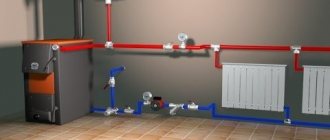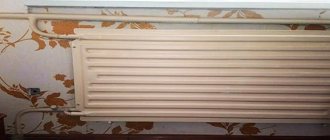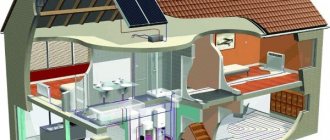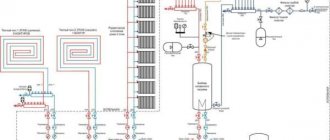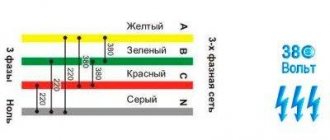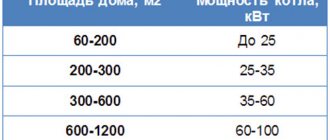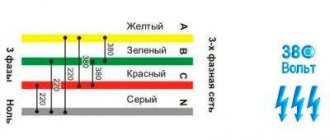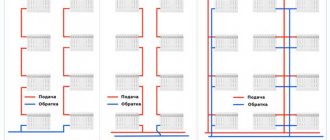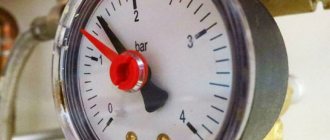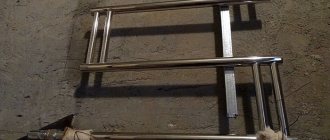The heating system in a one-story house can be installed according to various schemes. When choosing the optimal option, the project budget and the availability of fuels are taken into account.
As well as the features of the structural elements of a private residential building: the area of the facility, the materials used in construction, the presence of a warehouse for the installation of boiler equipment.
Let's figure out what rules should be followed when designing a heating system, and what actions should be avoided in order to avoid heating problems in the future.
Types of heating systems
The key difference between the type of systems under consideration is the presence of a circulation pump, which ensures uninterrupted movement of coolant in the pipeline. In fact, it is the pump that makes water heating of a one-story house with forced circulation much more convenient compared to its gravity counterparts.
There are only two main types of forced circulation systems:
- Single-pipe . This type of system demonstrates acceptable efficiency only in houses with a small area. As the name suggests, in a single-pipe system there is only one annular circuit along which the coolant moves. Often such heating is a modernized version of the gravity system.
- Two-pipe . Dual circuit systems are quite efficient and are great for heating large homes. A key feature of two-pipe systems is the presence of two pipelines - supply and return - which are connected to each radiator.
All do-it-yourself heating schemes for a private one-story house have their own characteristic features and characteristics, which will be discussed a little later. However, there are also common features - each battery must be equipped with a Mayevsky valve, which allows, if necessary, to bleed air from the pipeline. In addition, any heating system must be equipped with a drain valve, which is usually installed at the lowest point of the return line.
Principle of operation
Circulation pump parts
The design of the pump has a stainless steel body with a rotor located inside and a shaft with an impeller. The electric motor is driven by a rotor. The energy carrier is sucked in on one side and pumped into the main line on the other. The pump pushes water if there is resistance in the pipeline.
In forced systems, heating is regulated by room and by group of batteries. A sophisticated system contains multi-way taps and valves, automatic regulators and thermostatic units that make it easier to control your home's heating.
Dividing the heating main into sections does not affect the quality of heating; convectors and radiators are selected for the rooms, and water heated floor circuits can be connected. With an organized energy supply, you can make many branches from the main circuit and connect different floors separately.
Heating boilers
A forced heating scheme for a private house cannot do without heating equipment, which can be a boiler of one of the following types:
- Gas . The most common option. To install gas boilers, you need a main line, and the installation process is quite expensive. However, this is where the disadvantages end - gas-fired boilers are cheaper than all others to operate, and they do not require attention.
- Electrical . A less common and relatively inexpensive type of boiler. The biggest disadvantage of such devices is the cost of electricity and its consumption - ultimately, heating costs are prohibitively high.
- Liquid fuel . This is a fairly economical type of boiler, but it cannot be called a leader in this parameter. Diesel oil is usually used as fuel, which, on the one hand, is relatively inexpensive, but on the other hand, it will have to be topped up periodically, so it will be impossible to leave the boiler unattended.
- Solid fuel . Such boilers are inexpensive, and the cost of solid fuel (coal, firewood and pellets) is relatively low. Of course, to maintain the operating temperature, you will have to constantly add a new portion of fuel - that is, solid fuel boilers are quite inconvenient to operate.
In order for the heating scheme of a private house with forced circulation to be sufficiently effective, it is necessary to calculate the required boiler power at the design stage. It would be best to turn to specialists, but if you really want to, you can do this work yourself - for example, using an online calculator. There is also a technique that allows you to calculate the approximate value of the power, according to which, for heating every 10 sq.m. the premises require 1 kW of thermal energy.
Pipes
Most often, metal-plastic pipes are used for arranging heating pipelines. They have a lot of advantages, including excellent ability to withstand heating temperatures, high mechanical strength and long service life. A more traditional material is steel pipes, which are relatively inexpensive, but they have a serious drawback - susceptibility to corrosion, due to which the pipeline will quickly become faulty.
Calculation of the diameter of heating pipes for systems with forced circulation is carried out using special tables that take into account a lot of parameters, including the speed of fluid movement. As a rule, for the type of heating systems under consideration, rather narrow pipes are used, since there is no need to ensure independent movement of the coolant.
Also, when designing heating, you need to take into account the dimensions of the heating equipment pipes. If there is a difference in diameters, you will have to use different fittings to level out this factor.
Current solutions
To increase the efficiency of a single-pipe heating system, the main line is laid in such a way that the coolant immediately enters the radiators located in rooms with the greatest heat loss - corner rooms or with windows facing north.
The circulation pump is installed where the water temperature is minimum. If you plan to connect more than 10 radiators, it is not advisable to use vertical wiring. To find out the amount of heat required to create comfortable conditions, using a special program you will need to make a thermal calculation, which will help you choose the right boiler power, type and number of appliances. Then you should carry out the wiring diagram on a scale that will allow you to make correct calculations of the required material, then you will not have to pay for extra meters of pipes. At the closing sections of the system, between the input and output, a special jumper is installed - a bypass. This is a piece of pipe with a diameter smaller than that of the main line. It connects the forward and return radiator pipes. It is equipped with taps or valves that allow you to connect automatic thermostats, making it possible to regulate the degree of heating of each device, and, if necessary, completely block the access of the coolant. A properly installed bypass will redirect the flow of water through the riser, freeing up the area that requires repair or replacement. To install it you need to invite a specialist.
Heating radiators
There are several options for radiators suitable for installation in a forced circulation system. One of the most popular options is bimetallic batteries, the list of advantages of which includes excellent visual qualities and long service life. However, aluminum radiators are practically not inferior to bimetallic ones, and even classic cast iron products are quite suitable for creating a heating system.
Before installing batteries, you need to carefully calculate their location and heat transfer. The minimum distance from the radiator to the window sill is about 8 cm, and the radiator must be at least 3 cm away from the wall. When calculating the heat transfer of heating devices, you need to assume that to warm up 1 sq.m. 100 W of thermal energy is required.
Circulation pump
Both a single-pipe and a two-pipe heating system for a one-story house with forced circulation cannot do without a circulation pump, due to which the coolant moves in the system. When choosing a pump, you must first consider its power.
The required pump power is calculated using the following formula:
- Q = Qn / 1.163 x Dt,
- Where Q is the pump power,
- Qn is the amount of heat required to warm up the house,
- Dt – temperature difference in the supply and return circuits.
The circulation pump must be located on the return pipe in close proximity to the boiler. During installation, it is necessary to install a heating bypass with three taps and a filter that will prevent the pump from clogging with solid particles in the heating system.
On the market you can find suction pumps that are designed to be installed on a supply pipe. The connection diagram for a heating boiler with forced circulation rarely includes such devices - they are too expensive and in the vast majority of situations do not justify their price tag.
Classification of heat supply systems
In one-story buildings, cottages, and houses, autonomous heating systems or those dependent on external power sources are installed. The former operate on liquefied gas, diesel, and solid fuel. The second ones require connection to the electrical network or main gas pipeline.
Another difference between heat supply options is the need for human participation in the operation of the equipment.
Automated systems do not require 24/7 monitoring or manual configuration. Maintaining a comfortable temperature inside the building is ensured by thermostats and temperature sensors.
These devices regularly monitor changes in temperature indicators, which allows the heating system to take into account all factors that directly affect the temperature in the room: solar heat, radiation from household electrical appliances, heating from lighting lamps, etc.
The heat supply system is often installed together with boiler automation. Its main task is to achieve the highest possible efficiency, but not go beyond acceptable parameters.
Automation makes it possible to change the temperature in the house at different times of the day.
When classifying heating systems, the following characteristics are taken into account:
- type of heat carrier - air, water or steam, combined;
- type of fuel used - gas, electric, peat, wood, pellet, coal;
- method of transporting working fluid - with natural and forced circulation;
- the course of movement of the coolant is associated and dead-end;
- method of connecting boiler equipment - single-pipe and two-pipe arrangement;
- wiring diagram - with a vertical or horizontal distribution line, upper or lower, combined.
In multi-apartment buildings, the vertical wiring pattern dominates, while in single-story buildings, a horizontal layout is found. Combined heat supply methods prevail in high-rise new buildings.
Expansion tank
The type of heating system under consideration must be equipped with an expansion tank. As a rule, closed membrane tanks are used, which are installed directly behind the boiler on the return pipe.
The most important parameter of the expansion tank is the volume, which must be calculated before heating a one-story house. It's all about the physical processes occurring inside the forced circulation system. Heated water increases in volume, as a result of which the pressure in the pipeline increases. The presence of a suitable tank allows you to accept excess coolant, thereby neutralizing its impact on structural elements.
The volume of the tank is calculated using the formula:
- V = ex C / (1 - Po/Pmax) xk,
- Where e is the coefficient of thermal expansion of the coolant,
- Po – pressure value in an empty tank,
- C is the total volume of coolant in the system,
- Pmax – maximum pressure in the circuit,
- k – tank filling coefficient.
Installation of heating with forced circulation in a one-story house
Do-it-yourself heating of a one-story house is done using a technology that includes the following operations:
- First of all, the heating boiler is installed;
- The boiler is connected to a chimney that is led outside the building;
- When using a gas boiler, you must connect to the main line (this operation must be performed by specialists from the gas service);
- Heating batteries are installed along the walls in pre-selected places;
- All structural elements are connected by pipelines;
- The circulation pump and expansion tank cut into the return pipe;
- The pipelines are connected to the corresponding boiler nozzles;
- The assembled system must be launched in test mode, after which it can be put into operation.
This technology is common to all types of heating systems - there are minor differences only in the laying of pipes and installation of radiators.
What information do craftsmen need?
Before installation work begins, you should discuss all the nuances with specialists and show your vision of the heating system.
Masters must provide:
- complete information about the materials from which the building’s roof, wall coverings, and window structures are made;
- one-story house plan;
- drawings where the locations of plumbing units are marked.
The service life of a heat supply system is influenced not only by the quality of engineering design and skillful installation, but also by the selected materials, installed boiler equipment, as well as the rational use of heating elements.
Do-it-yourself installation of a one-pipe system
A single-pipe heating scheme for a one-story house with forced circulation is usually equipped with radiators installed on bypasses. Simply inserting devices will significantly complicate operation - for example, if repairs are necessary, you will have to turn off the entire system. In addition, the lack of bypasses does not allow you to regulate the heat transfer of individual radiators.
As a rule, the installation of a heating system in a private house and the pipeline in such a scheme is laid in the underground space, so the radiators are connected in a lower way - that is, both bypass outputs are connected to the lower pipes of the batteries.
Requirements for individual heating
The heating unit must be planned so that it matches the architectural design of the building. The location of all functional elements should be as convenient as possible for operation and carrying out scheduled repairs without compromising the structural integrity of the house.
Basic requirements for modern heating systems:
- energy efficiency;
- easy installation and maintenance;
- high heat transfer rates;
- complete/partial independence from electricity.
Before you begin designing a heat supply, you need to select the most suitable and economical source of thermal energy - a stove or fireplace, water, steam, air or electric heating.
And we still have to decide on the basic piping diagram for heating a one-story private house, accurately calculate the power and objectively assess the load on the system, taking into account all the features.
An individual heating system must create a comfortable microclimate inside the house in the winter, be economical and reliable in operation
A properly installed heating distribution line makes it possible to organize uniform heating of the air in all rooms of a private house in a minimum amount of time.
Connection diagram for a two-pipe heating system in a private house
In a one-story house, a two-pipe heating system with forced circulation is laid horizontally - there is no need for vertical risers. The pipes are laid along the walls, and the batteries are connected diagonally. However, there are exceptions to this rule - for example, if the supply pipe is located on the wall and the return pipe is located under the floor, then it would be much more expedient to connect the radiators from below.
Conclusion
The heating scheme for a one-story house with forced circulation of coolant is quite simple, but is highly efficient and reliable. A competent and balanced approach to each stage of heating installation will allow you to create a high-quality system that can last for decades.
